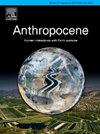Aggregated multivariate environmental risk (AMER) index and predictive models for heavy metal pollution trends in ecosystems
IF 3.3
2区 地球科学
Q2 ENVIRONMENTAL SCIENCES
引用次数: 0
Abstract
Heavy metal (HM) contamination in estuarine sediments represents a critical environmental challenge, with profound implications for ecosystem health and human safety. To address this pressing issue, proactive monitoring and predictive modeling have emerged as essential tools. This study investigates the application of three predictive models—Grey Model (GM (1,1)), Autoregressive Integrated Moving Average (ARIMA), and Exponential Smoothing (ES)—to analyze historical and current data on eight key HMs (Cu, Zn, Cd, Pb, Ni, Cr, Mn, and Fe) in sediment samples from the Rosetta and Damietta estuaries in Egypt. Utilizing these models, five-year contamination trends were forecasted, incorporating both single-element pollution indices (SEPIs) and multiple-element pollution indices (MEPIs) to evaluate pollution levels and elucidate complex metal interactions. Furthermore, this study introduces a new MEPI, the Aggregated Multivariate Environmental Risk (AMER) index, derived from Principal Component Analysis (PCA). The AMER index demonstrated approximately 20 % higher responsiveness—measured by earlier detection and greater sensitivity to pollution fluctuations—compared to traditional multimetal indices such as PERI. Among the models evaluated, ES exhibited the highest predictive accuracy, achieving a mean absolute percentage error (MAPE) of 6.3 % for Cu predictions. Significant positive correlations were identified between Pb and Ni (r = 0.77, p < 0.05) in Damietta and Cu and Zn (r = 0.65, p < 0.05) in Rosetta, suggesting common pollution sources. The five-year forecasts indicate a declining trend for most metals, reflecting the efficacy of recent pollution control measures. This integrated modeling approach provides enhanced pollution assessment and forecasting capabilities, offering valuable insights for the development of sustainable estuarine management strategies.

生态系统重金属污染趋势的综合多元环境风险指数及预测模型
河口沉积物中的重金属污染是一个严峻的环境挑战,对生态系统健康和人类安全具有深远的影响。为了解决这个紧迫的问题,主动监测和预测建模已经成为必不可少的工具。本文研究了灰色模型(GM(1,1))、自回归综合移动平均(ARIMA)和指数平滑(ES)三种预测模型的应用,分析了埃及罗塞塔和达米埃塔河口沉积物样品中8种关键hm (Cu、Zn、Cd、Pb、Ni、Cr、Mn和Fe)的历史和当前数据。利用这些模型,利用单元素污染指数(SEPIs)和多元素污染指数(mepi)来评价污染水平并阐明复杂的金属相互作用,预测了5年的污染趋势。此外,本研究引入了一个新的MEPI,即综合多元环境风险(AMER)指数,该指数来源于主成分分析(PCA)。与传统的多金属指数(如PERI)相比,AMER指数显示出大约20% %的高响应性(通过早期检测和对污染波动的更大灵敏度来测量)。在评估的模型中,ES表现出最高的预测精度,Cu预测的平均绝对百分比误差(MAPE)为6.3 %。Damietta地区的Pb和Ni (r = 0.77,p <; 0.05)与Rosetta地区的Cu和Zn (r = 0.65,p <; 0.05)呈显著正相关,表明两者存在共同的污染源。五年预测显示,大多数金属的价格呈下降趋势,反映出近期污染控制措施的效果。这种综合建模方法提供了增强的污染评估和预测能力,为可持续河口管理策略的发展提供了有价值的见解。
本文章由计算机程序翻译,如有差异,请以英文原文为准。
求助全文
约1分钟内获得全文
求助全文
来源期刊

Anthropocene
Earth and Planetary Sciences-Earth and Planetary Sciences (miscellaneous)
CiteScore
6.30
自引率
0.00%
发文量
27
审稿时长
102 days
期刊介绍:
Anthropocene is an interdisciplinary journal that publishes peer-reviewed works addressing the nature, scale, and extent of interactions that people have with Earth processes and systems. The scope of the journal includes the significance of human activities in altering Earth’s landscapes, oceans, the atmosphere, cryosphere, and ecosystems over a range of time and space scales - from global phenomena over geologic eras to single isolated events - including the linkages, couplings, and feedbacks among physical, chemical, and biological components of Earth systems. The journal also addresses how such alterations can have profound effects on, and implications for, human society. As the scale and pace of human interactions with Earth systems have intensified in recent decades, understanding human-induced alterations in the past and present is critical to our ability to anticipate, mitigate, and adapt to changes in the future. The journal aims to provide a venue to focus research findings, discussions, and debates toward advancing predictive understanding of human interactions with Earth systems - one of the grand challenges of our time.
 求助内容:
求助内容: 应助结果提醒方式:
应助结果提醒方式:


